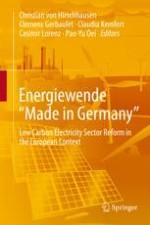This book provides an in-depth analysis of the energy transformation process ongoing in Germany, now commonly referred to as energiewende, in the European context, with a focus on the electricity sector. It presents an expert look at the origins of the German energiewende, its concrete implementation, its impacts within the European context as well as medium and long-term perspectives. The authors, internationally recognized energy, electricity, and climate economists at the German Institute for Economic Research (DIW Berlin) and Berlin University of Technology, conclude that the first years of the energiewende have successfully laid the foundation for a renewables-based electricity system in Germany, but that challenges remain in relation to decarbonizing the electricity system and phasing out nuclear energy. The authors also provide ground-breaking insights to inform energy policy in other countries and at the European level. In the outlook, the authors explore upcoming issues, such as coupling between the electricity and other sectors, and behavioral changes of industry and households. The book addresses readers in the energy industry, energy and climate policymakers, regulators, and others interested in the low carbon energy system transformation in Germany, Europe, and worldwide.
